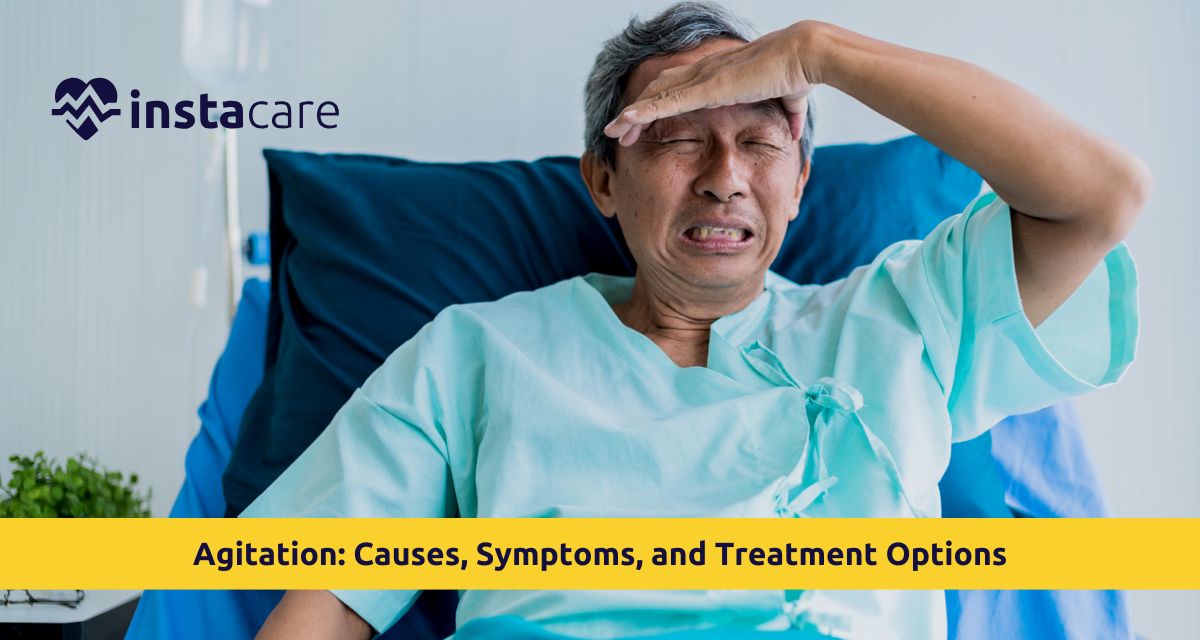What is Agitation?
Various Types of Agitation
- Psychomotor Agitation: Psychomotor agitation describes repetitive movement patterns of pacing or tapping that usually appears in mood disorders or after drug modification.
- Emotional Agitation: Emotional agitation is the condition known as emotional agitation creates mood flexibility which makes patients easily become irritable or show sadness or exaggerated emotional reactions.
- Behavioral Agitation: Behavioral agitation represents another well-known pattern which produces aggressive or hostile conduct. Agitation develops when patients cannot achieve their needs or show ineffective coping skills or face frustration.
- Cognitive Agitation: Cognitive agitation is, however, experienced as a state of overactive or racing thinking, confusion, and impairment of concentration.
- Situational Agitation: Situational agitation develops as a consequence of certain stresses such as bereavement, trauma, or severe environmental shift.
Some Causes of Agitation
- Mental illness: Mental illnesses will be the most frequent etiology. Restlessness and irritability are seen in anxious, depressed, or schizophrenic patients. Major depressives, for instance, have been found to exhibit emotional agitation on the basis of subjective tension and hopelessness.
- Neurological illness: Neurological diseases including Alzheimer's or Parkinson's illness lead to agitation because their patients often experience confusion and frustration about their situation. The agitation in dementia patients stems from their inability to communicate or observe their surroundings to their desired extent.
- Substance Abuse and Withdrawal: Both are also significant causes of substance abuse and withdrawal. Alcohol, drugs, or even caffeine can overstimulate the nervous system and lead to agitation. When the patient abruptly stops using them, withdrawal can induce irritability, shakiness, or hostility.
- Medical illnesses: Infection, metabolic disorder, or chronic pain are only some of the medical illnesses that affect brain chemistry and result in agitation or exacerbate agitation. Besides, some medications, including corticosteroids or psychiatric medications, as a side effect, include agitation.
Various Agitation Symptoms
- The patient will agitate and cannot sit, pacing restlessly or agitating. Others will cry, become violent, or have mood swings.
- The person will be complaining emotionally of feeling tense or overwhelmed and worst of all, becoming aggressive. Physically, there will be labored breathing, tense muscles, or fists.
- Cognitively, the agitated patient will be unable to concentrate, act in a nonsensical way, or talk hastily. In the child, withdrawal or tantruming. In the elderly, especially the demented, it will be wandering, excessive questioning, or disorientation.
- Early detection of such a symptom will prevent worsening and early treatment.
View More: Does Mental Health Affect Our Intelligence
Treatment Alternatives for Agitation
- Following the perpetrator of Agitation in mental health, drugs are the norm prescription. Cognitive Behavioral Therapy (CBT) instills learning in patients to observe cues, change pathological thinking, and learn to respond in a healthier manner.
- Where there is neurological or psychiatric illness, medicine may be applied. Antipsychotics, anxiolytic medication, or mood stabilizers may be used in management of aggression as long as it is administered and under strict control. Agitation in depression is particularly where the individual suffers from schizophrenia, dementia, or manic depression.
- Environmental adaptation is the second overall strategy. Noise reduction, establishment of familiar accustomed schedules, and disorientation reduction can calm people, children and elderly most of all, into safety and lowered responsiveness. It is highly valuable to treat chronically disoriented or memory-impaired patients.
- Physical health should also be considered. Medicine can be managed, infection eliminated, or chronic disease managed in a bid to reverse medical cause of agitation. Diet, exercise, and rest can work wonders for emotional stability and resilience.
- Acute presentations, however, offer short intervention from safe space, de-escalation strategy such as deep breathing, or call to emergency services in case of potential harm.
How to Prevent Agitation Before It Happens Too Late?
- An everyday routine may be used to dispel ambiguity, especially for prevention of Agitation in children or mentally challenged individuals. Routine gives the sense of control that may prevent confusion or frustration.
- Acquiring the skill to identify earliest warning signs for stress, i.e., irritability or tiredness, will ensure successful coping efforts, e.g., withdrawal, use of relaxation technique, or seeking assistance.
- Reducing the level of stimulation, i.e., overwhelming environments, tight schedules, or in-your-face contacts, serves just as well. That is particularly true for patients with existing mood or Anxiety and agitation disorders.
- Open communication being promoted proves worthwhile as well. If a person feels heard and heard is, he is not upset if his emotional needs are not fulfilled.
Conclusion

